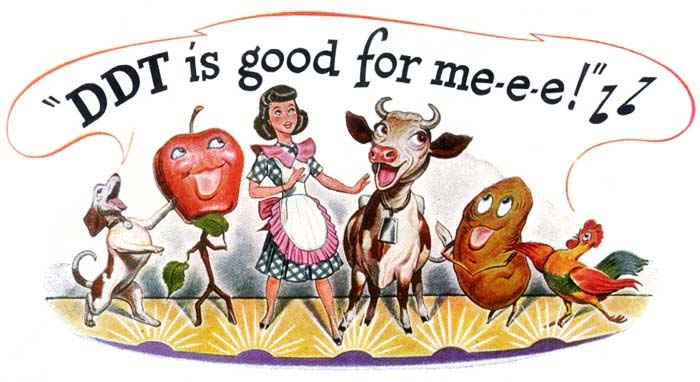 Michael Skinner didn’t start the experiment with the hypothesis that he’d find a connection between the insecticide DDT and obesity.
Michael Skinner didn’t start the experiment with the hypothesis that he’d find a connection between the insecticide DDT and obesity.
“We didn’t expect to find that,” he said. “In fact, the frequency of obesity really came as a surprise.”
Skinner, a scientist at Washington State University, wanted to take a close look at the way DDT affected inheritance. So his team injected DDT into pregnant rats and watched first their children, and then their grandchildren (or is it grandrats?). It was only in the third generation, the great-grand-rat, that they saw it: Fully half of these rats were obese. The implication is that the same thing could be happening with humans.

Michael Skinner.
“Is there a correlation between the fact that we were all exposed to DDT in the 1950s for 10 years, and the fact that we are now seeing high levels of obesity?” Skinner asked. His work suggests that there could be.
Of course, the more immediate cause of obesity is too many calories. But there may be more going on here than too much food. Humans are getting fat, so are our pets, so are wild animals. There’s a trend toward obesity in nearly every species scientists have studied.
Of course it’s too early to lay the blame on DDT. This study simply raised the possibility. But the findings are plausible.
“I do believe that the observed obesity is real,” emailed Andrea Gore, a professor of pharmacology and toxicology at the University of Texas Austin. Other experiments have already shown that endocrine-disrupting chemicals can cause obesity generations after exposure, Gore said.
Skinner had already seen that he could trigger the inheritance of disease with various chemicals. There’s a narrow window during the gestation, where an exposure to lots of things can cause heritable epigenetic changes.
“The majority of things we’ve tested came up positive,” he said.
So the obvious question: Is this a problem specific to DDT, or would we have seen similar results if Skinner’s team had decided to inject the rats with vitamin C? In other words, is this about the chemical, or just the timing of the exposure?
If the DDT had caused kidney disease, Skinner said, he would have been reassured. A lot of things seem to have epigenetic effects that lead to kidney disease. But obesity is unusual — that suggests a problem with DDT itself, Skinner said.
Skinner started this experiment after the World Health Organization lifted the ban on DDT to help fight malaria. That was a good decision based on the available information, Skinner said, but no one had looked to see if DDT had an effect on subsequent generations. “On the one hand, there are 2 million deaths per year in Africa from malaria. On the other hand, we’re looking at the possibility of metabolic disease in every generation to come,” Skinner said.
The word “possibility” there is key. This wasn’t a risk assessment study, and we don’t know if we’d see something similar in humans from environmental exposure to DDT, as opposed to direct injection. But this study should give pause to the people arguing to reintroduce DDT to places even without a malaria problem, Skinner said. It’s now being used in France, among other places. And once you spray DDT, it’s out there for a long time.
“If you go to any river in the U.S., and push your finger down into the mud one or two inches, the primary contaminant you will find there is DDT,” Skinner said. The stuff just takes a really long time to break down, and Skinner’s research suggests that its effects could last much longer.



